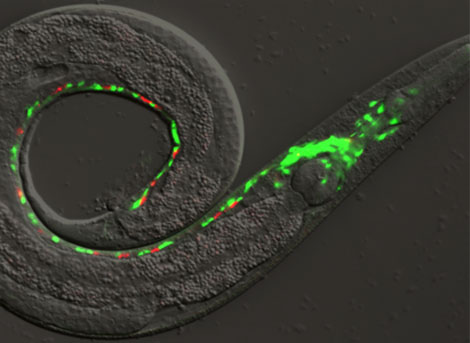What do we do?
We use Caenorhabditis elegans (C. elegans) and mice as models to investigate:
- Molecular mechanisms of neurotransmitter release.
- Function and regulation of gap junctions.
- Function and regulation of the BK channel.
Why do we care about neurotransmitter release, gap junctions, and the BK channel?
Neurons communicate with each other through chemical and electrical synapses. At chemical synapses, presynaptic neurons control postsynaptic neurons by releasing neurotransmitters. The BK channel (also known as Slo1 or SLO-1) plays a key role in regulating neurotransmitter release. By investigating molecular mechanisms of neurotransmitter release, and the function and regulation of gap junctions and the BK channel, we can better understand how they contribute to physiological functions of the nervous system, and why mutations affecting them may cause various human diseases.
Why do we use both worms and mice in our research?
C. elegans is a small nematode (~1 mm long in the adult stage). Despite its small size and relatively simple anatomy, many cellular and molecular mechanisms are conserved in C. elegans. The powerful molecular genetics of C. elegans allows us to identify previously unknown regulators of the BK channel, and chemical and electrical synapses. By electrophysiological and behavioral studies of wild-type and specific knockout mouse strains, we investigate whether the novel regulatory molecules or mechanisms discovered with worms are conserved in mammals. Besides worms and mice, we also use Xenopus oocytes and mammalian cell lines as expression systems to perform electrophysiological and biochemical studies.
